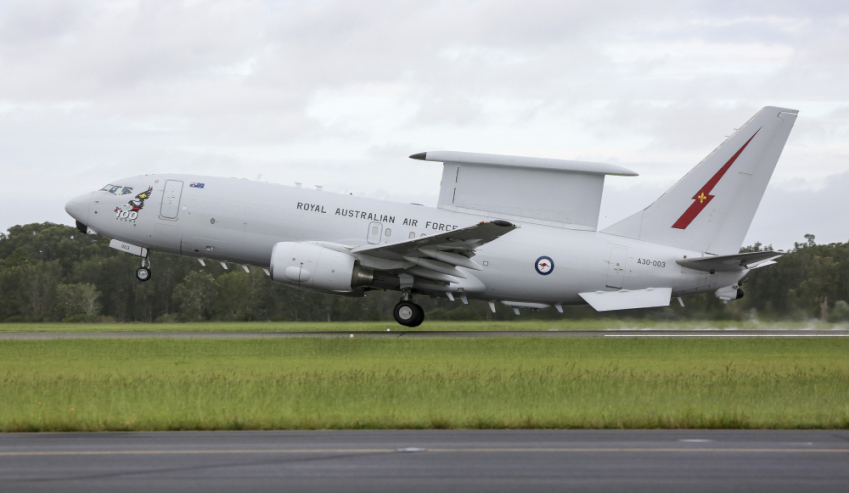Boeing, in collaboration with Northrop Grumman, has successfully tested the open mission systems (OMS) approach on the E-7 Airborne Early Warning and Control (AEW&C) platform.
To continue reading the rest of this article, please log in.
Create free account to get unlimited news articles and more!
In collaboration with Northrop Grumman, Boeing recently conducted two flight tests on a test bed aircraft, once again marrying the OMS-compliant battle management command and control (BMC2) system to Northrop Grumman’s advanced, wide-band active electronically scanned array (AESA). This successful airborne test of OMS architecture is a key step in validating the approach and moving the product to fielding.
Rick Greenwell, Boeing chief engineer, aircraft modernization and modification, said, “From an engineering standpoint, executing this OMS test in a relevant environment represents a major step-up in demonstrated readiness. As a company, we are committed to OMS and have demonstrated OMS on defence products such as the T-7A Red Hawk and F-15EX. AEW&C now joins that prestigious Boeing product list.”
Both flight tests saw the AEW&C mission computing, processing and Human-Machine Interface (HMI) hardware mounted on the test aircraft and connected to the Northrop Grumman sensor. Via the HMI, a Boeing operator commanded the sensor to conduct specific activities and then received the sensor data for processing and display.
“It is a major accomplishment to take the OMS architecture from lab and ground testing to the air, and connecting it to an operating sensor in an environment similar to flying an operational mission. Open architecture is a very efficient way of doing software engineering and bringing capabilities across platforms,” Greenwell added.
Last month, Boeing and Northrop Grumman conducted a ground test scenario in which the AESA was commanded by Boeing’s open mission computing to focus on specific areas of interest for potential “threats”.
Nancy Anderson, Boeing vice president, aircraft modernization and modification, said, “Our AEW&C aircraft is already a combat-proven, mature platform. By adding an OMS-compliant BMC2 system, it tremendously increases the platform’s growth opportunities. Customers will have more flexibility to add or upgrade capabilities, select vendors and determine an implementation schedule.”
Boeing’s AEW&C is the only off-the-shelf, combat-proven air battle management solution providing command and control and communication capabilities in a congested and contested battle space.
“Customers will have more flexibility to add or upgrade capabilities, select vendors and determine an implementation schedule. Customers have laid out OMS requirements for future programs, and this accomplishment is a great example of Boeing listening and responding,” Anderson explained.
The AEW&C provides unparalleled abilities to scan the battlespace; communicate with surface, ground and air assets; and enable integration across joint platforms. Customers currently operating the AEW&C include Australia, South Korea and Turkey, and the United Kingdom is under contract.
The Boeing 737 AEW&C is a state-of-the-art system providing powerful airborne surveillance, communications and battle management.
The 737 AEW&C system encompasses both the Boeing 737-700 aircraft platform and a variety of aircraft control and advanced radar systems. Consisting of components created by Boeing and Northrop Grumman, the 737 AEW&C represents the standard for future airborne early warning systems.
The E-7A Wedgetail AEW&C functions include:
- A steerable beam, L-band, electronically scanned array that provides optimal performance in range, tracking and accuracy;
- Radar that can track airborne and maritime targets simultaneously;
- Assistance to the mission crew in directing the control of high-performance fighter aircraft while continuously scanning the operational area;
- A “top hat” portion that provides a practical solution for fore and aft coverage while maintaining the low drag profile of the dorsal array system – enabling the MESA system to be installed on the mid-size 737-700 platform without significant impact to aircraft performance;
- An integrated identification friend or foe (IFF) function that shares the primary radar arrays to reduce weight, improve reliability and simplify target correlation; and
- Advanced open-system architecture with standards-based design for cost-effective integration and add-on flexibility.
Based at RAAF Base Williamtown, Australia’s six E-7A Wedgetails significantly improve the effectiveness of the ADF. They are capable of communicating with other aircraft and providing air control from the sky, and can cover 4 million square kilometres during a single 10-hour mission.

 Login
Login







